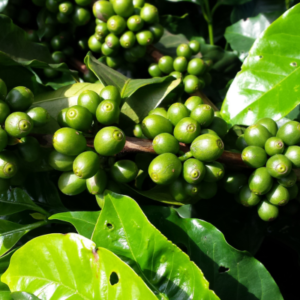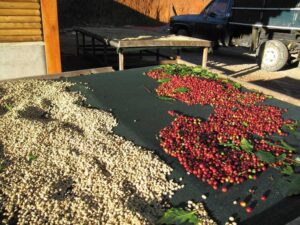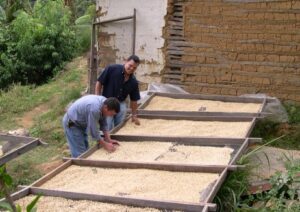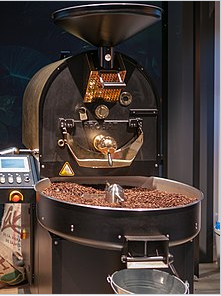I love coffee. Dark roast, blonde…you name it. Nothing says good morning like a nice hot cup of soul-awakening goodness. Over the years, I have to switch to decaffeinated for health reasons, but I really do love the flavor so I don’t really miss it. Have you ever wondered how that magical liquid known as coffee gets to your cup every morning?
From the moment coffee cherries are harvested to the aromatic cup poured into your favorite mug, each step in the process contributes to the rich flavors and invigorating aromas we associate with our morning ritual. Join me as I explore the intricate journey of coffee, including a closer look at the decaffeination process that offers a choice to those seeking the flavor without the buzz.
- Cultivation and Harvesting: Coffee cultivation typically takes place in regions known as the “coffee belt,” where optimal conditions such as altitude, climate, and soil quality prevail. The journey begins with the coffee plant, Coffea, which produces small red or purple fruits known as cherries. These cherries house the coffee beans, which are the seeds of the fruit. Harvesting is often done by hand, selectively picking ripe cherries to ensure quality.

- Processing: After harvesting, the cherries undergo processing to extract the coffee beans. There are two primary methods: the dry process and the wet process. In the dry process, cherries are spread out to dry in the sun, allowing them to naturally ferment and separate from the beans. The wet process involves pulping the cherries to remove the outer skin, fermenting the beans, and then washing them to remove any remaining pulp. This step is crucial in determining the flavor profile of the coffee.

- Milling and Sorting: Once the beans are dried, they undergo milling to remove the parchment layer covering them. This exposes the green coffee beans, which are then sorted based on size, weight, and quality. This meticulous sorting ensures consistency and uniformity in the final product.

- Roasting: Roasting is perhaps the most transformative step in the coffee journey, where the green beans are heated to perfection, unlocking their complex flavors and aromas. Roasting temperatures and durations vary depending on the desired roast profile, whether it’s light, medium, or dark. This step requires precision and expertise to achieve the desired flavor profile while preserving the unique characteristics of the beans.

- Grinding and Brewing: Once roasted, the coffee beans are ground to the desired consistency based on the brewing method. Whether it’s espresso, drip, French press, or pour-over, each method requires specific grind sizes to extract optimal flavors. The ground coffee is then brewed with hot water, allowing the soluble compounds within the beans to infuse the water, creating the aromatic beverage we love.

Decaffeination Process: Decaffeinated coffee offers a caffeine-free alternative for those seeking to enjoy the taste of coffee without the stimulating effects. The decaffeination process typically occurs before roasting and can be achieved through various methods, including solvent-based processes using solvents like methylene chloride or ethyl acetate, or non-solvent methods such as the Swiss Water Process, which uses water to decaffeinate the beans.
In solvent-based processes, green coffee beans are steamed to open their pores, allowing the solvent to extract the caffeine. The solvent is then removed, and the beans are steamed again to eliminate any remaining traces. Non-solvent methods, like the Swiss Water Process, involve soaking the beans in water to extract the caffeine, using activated charcoal filters to remove the caffeine from the water, and then reintroducing the caffeine-free water to the beans for reabsorption of flavors.
And there you have it! From the verdant coffee farms to the comforting aroma of freshly brewed coffee, each step in the journey from bean to pot contributes to the rich tapestry of coffee culture. Whether it’s the meticulous cultivation and harvesting or the precise roasting and brewing techniques, every stage plays a vital role in delivering the perfect cup. And for those who prefer to savor the flavor without the caffeine, the decaffeination process offers a welcome alternative, ensuring that coffee can be enjoyed by all, regardless of preference or sensitivity. So, the next time you savor that first sip of your favorite brew, take a moment to appreciate the intricate journey that brought it from bean to pot.





Hi! Thanks for the great article!